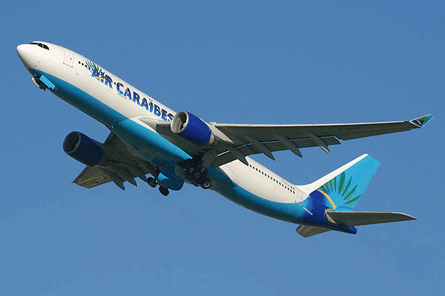The most detailed account of previous pitot icing incidents on the A330 comes in a memo written by the flight safety officer of Paris Orly-based Air Caraïbes Atlantique after the carrier suffered two in quick succession.
Hugues Houang describes how A330-200s F-OFDF and F-OPTP encountered severe icing in virtually identical circumstances at FL350 on North Atlantic flights between Paris and Martinique in August and September last year.
Stressing their similarity, he relates how one crew then encountered turbulence followed by what appears to have been pitot icing - identifiable because the detected temperature climbed to the temperature of the ice (-5°C/23°F).
Over a 2min period they then observed grossly incorrect airspeed and Mach indications followed by multiple warnings reminiscent of those experienced on AF447, autopilot disconnect, a period in alternate law, and a stall warning.
 |
|---|
© Jan Severijns/AirTeamImages.com |
The crew managed to control the aircraft and very quickly the measured temperature returned to normal, speed indications were resumed and they were able to re-engage the autopilot. Houang describes the full sequence of symptoms in great technical detail in his report.
Subsequently the airline called a meeting with Airbus. Houang says: "At the initiative of our training manager we stressed the difficulty encountered by the crew in applying the 'unreliable speed indication' checklist."
He explains how the quick reference handbook includes potentially contradictory guidance about the probable validity of stall warnings in the conditions experienced, particularly in alternate law.
He concludes: "Despite these contradictory aspects, the pilots of [the aircraft] knew how to react to the two inappropriate stall warnings. Furthermore the Airbus engineers understood all the difficulties encountered by the crew in applying rapidly and effectively the 'unreliable speed indication' procedure."
Houang says the Airbus engineers agreed to consider modifying the checklists and at the time of writing the memo, on 1 December last year, he was waiting to see what happened.
Meanwhile, the airline immediately upgraded the pitot tubes on its four-strong A330 fleet to the improved Thales model designed to address the icing issue.
An Air France air safety message to its pilots last November talks of six related incidents on A330/A340s resulting in incorrect airspeed indications, numerous warning messages, and sometimes configuration alerts.
It urges pilots to be vigilant at high altitude when icing and turbulence are encountered, and to fly the aircraft gently if they take manual control.
Source: Flight International























